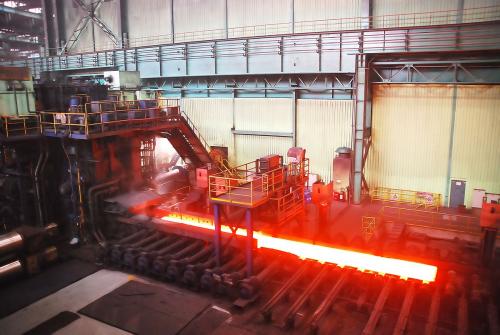Hot rolling is a metalworking process and in the process metal is heated above the melting temperature to plastically deform it in the rolling operation.

The same volume of metal with the desired geometrical dimensions and material properties is created by this process. The two rolls can flatten and lengthen the hot metal to reduce the cross-sectional and obtain an even thickness. The most common product of the hot rolling process is hot-rolled steel which is widely used in the metal industry.
Hot rolling can improve the following characteristics of the steel:
1. Toughness and strength
2. Ductility
3. Resistance to vibration and shock
4. Formability
5. Weldability
Hot-rolled steel products can be classified into four kinds:
1. Flat
2. Long
3. Seamless
4. Specialty
Common applications of hot-rolled steel:
1. Automotive structural parts such as frames
2. Tabular products such as pipe and gas cylinders
3. Machine structures such as saws and springs
4. Agriculture equipment
5. Metal buildings
6. Guard rails
Scale, rust or impurities may lead to Surface defects. When the hot surface is oxidized by air, scale is produced. If steel is exposed to air within short periods, this scale can reduce corrosion, however, the corrosion will expand if it is exposed for long time. If the surface is in contact with water, large amounts of mill scale will cause serious pitting corrosion.
The scale on the surface is usually removed mechanically, using water under high pressure or acid pickling and then oiling to reduce rusting.